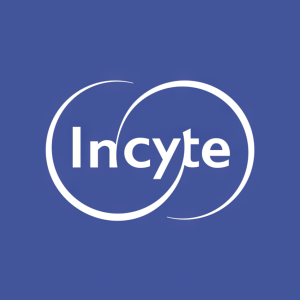Incyte Announces Positive CHMP Opinion for Ruxolitinib Cream (Opzelura™) for the Treatment of Non-segmental Vitiligo in Adults and Adolescents
-
At approval, ruxolitinib cream will be the first treatment for repigmentation in non-segmental vitiligo available in the
European Union (EU) -
In
Europe , there are approximately 1.5 million patients diagnosed with vitiligo, a progressive and complex disease with a high unmet need - The positive CHMP opinion is based on Phase 3 data showing treatment with ruxolitinib cream resulted in improvements in facial and total body repigmentation1
“The positive CHMP opinion brings us one step closer to bringing ruxolitinib cream, the first ever treatment for repigmentation in non-segmental vitiligo, to patients and healthcare professionals in the
The CHMP opinion recommending the approval of ruxolitinib cream was based on data from two pivotal Phase 3 clinical trials (TRuE-V1 and TRuE-V2) evaluating the safety and efficacy of ruxolitinib cream versus vehicle (non-medicated cream) in more than 600 people with non-segmental vitiligo, age 12 and older1. Results from the TRuE-V program, recently published in
The CHMP’s opinion is now being reviewed by the
“Given its complex pathogenesis and unpredictable progression, vitiligo can be very challenging for dermatologists to treat,” said Thierry Passeron M.D., Ph.D., Professor and Chair,
About Vitiligo
Vitiligo is a chronic autoimmune disease characterized by depigmentation of skin that results in patchy loss of skin color from the progressive destruction of pigment-producing cells known as melanocytes. Overactivity of the JAK signaling pathway is believed to drive inflammation involved in the pathogenesis and progression of vitiligo. In
About TRuE-V
The TRuE-V clinical trial program includes two Phase 3 studies, TRuE-V1 (NCT04052425) and TRuE-V2 (NCT04057573), evaluating the safety and efficacy of ruxolitinib cream in patients with vitiligo. Each study enrolled approximately 300 patients (age ≥12 years) who have been diagnosed with non-segmental vitiligo.
About Ruxolitinib Cream (Opzelura™)
Ruxolitinib cream (Opzelura™), a novel cream formulation of Incyte’s selective JAK1/JAK2 inhibitor ruxolitinib, approved by the
Opzelura is a trademark of
About Incyte Dermatology
Incyte’s science-first approach and expertise in immunology has formed the foundation of the company. Today, we are building on this legacy as we discover and develop innovative dermatology treatments to bring solutions to patients in need.
Our research and development efforts in dermatology are initially focused on leveraging our knowledge of the JAK-STAT pathway. We are exploring the potential of JAK inhibition for a number of immune-mediated dermatologic conditions with a high unmet medical need, including atopic dermatitis, vitiligo and hidradenitis suppurativa.
To learn more, visit the Dermatology section of Incyte.com.
About
Forward-Looking Statements
Except for the historical information set forth herein, the matters set forth in this press release, including statements regarding whether and when ruxolitinib cream might be approved in the EU to treat patients with vitiligo, the potential for success of such treatment, Incyte’s TRuE-V clinical program and Incyte’s Dermatology program generally, contain predictions, estimates and other forward-looking statements.
These forward-looking statements are based on the Company’s current expectations and subject to risks and uncertainties that may cause actual results to differ materially, including unanticipated developments in and risks related to: unanticipated delays; further research and development and the results of clinical trials possibly being unsuccessful or insufficient to meet applicable regulatory standards or warrant continued development; the ability to enroll sufficient numbers of subjects in clinical trials and the ability to enroll subjects in accordance with planned schedules; the effects of the COVID-19 pandemic and measures to address the pandemic on the Company’s clinical trials, supply chain, and other third-party providers and development and discovery operations; determinations made by the
____________________________
1 Rosmarin D, et al. Two Phase 3 Randomized Controlled Trials of Ruxolitinib Cream for Vitiligo.
2 Opzelura Prescribing Information.
3 Mohr N, et al. Epidemiology of Vitiligo - A Dual Population-Based Approach. Clinical Epidemiology. 2021 May 26;13:373-382.
4 Bibeau K, et al. Vitiligo prevalence and quality of life among adults in
5 Gandhi K, et al. Prevalence of Vitiligo Among Adults in
6 Frisoli M, et al. Vitiligo: mechanisms of pathogenesis and treatment. Annual Review of Immunology. 2020;38(1):621-648.
View source version on businesswire.com: https://www.businesswire.com/news/home/20230223006046/en/
Media
+1 302 498 6171
cloveman@incyte.com
+41 21 343 3113
ezawislak@incyte.com
Investors
+1 302 274 4773
cchiou@incyte.com
Source:







